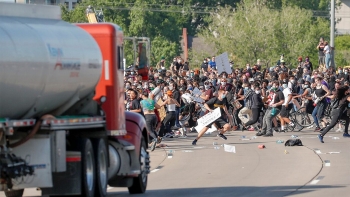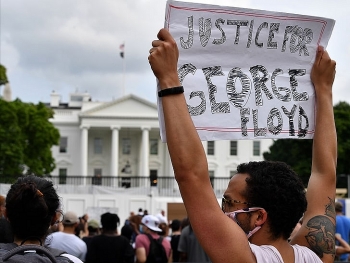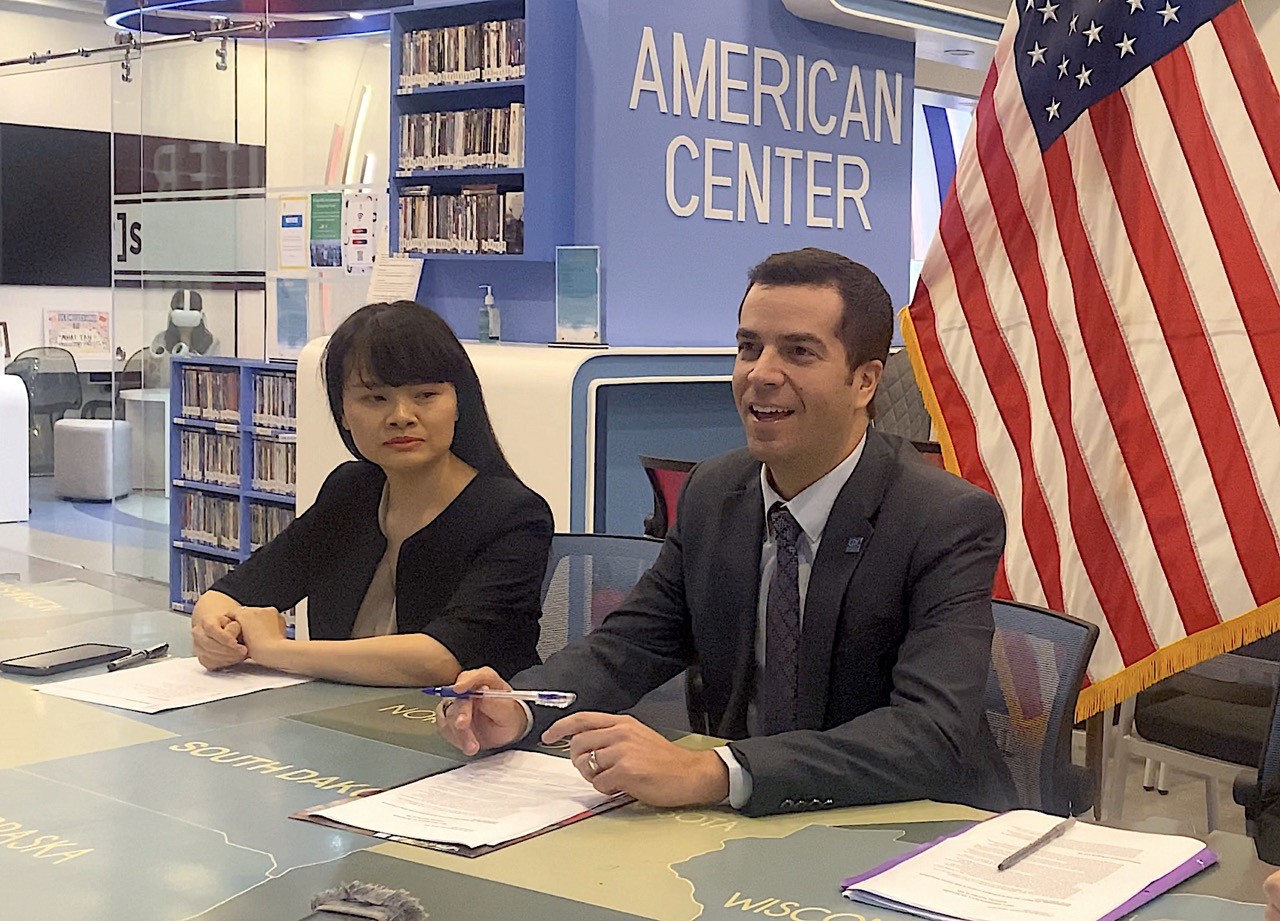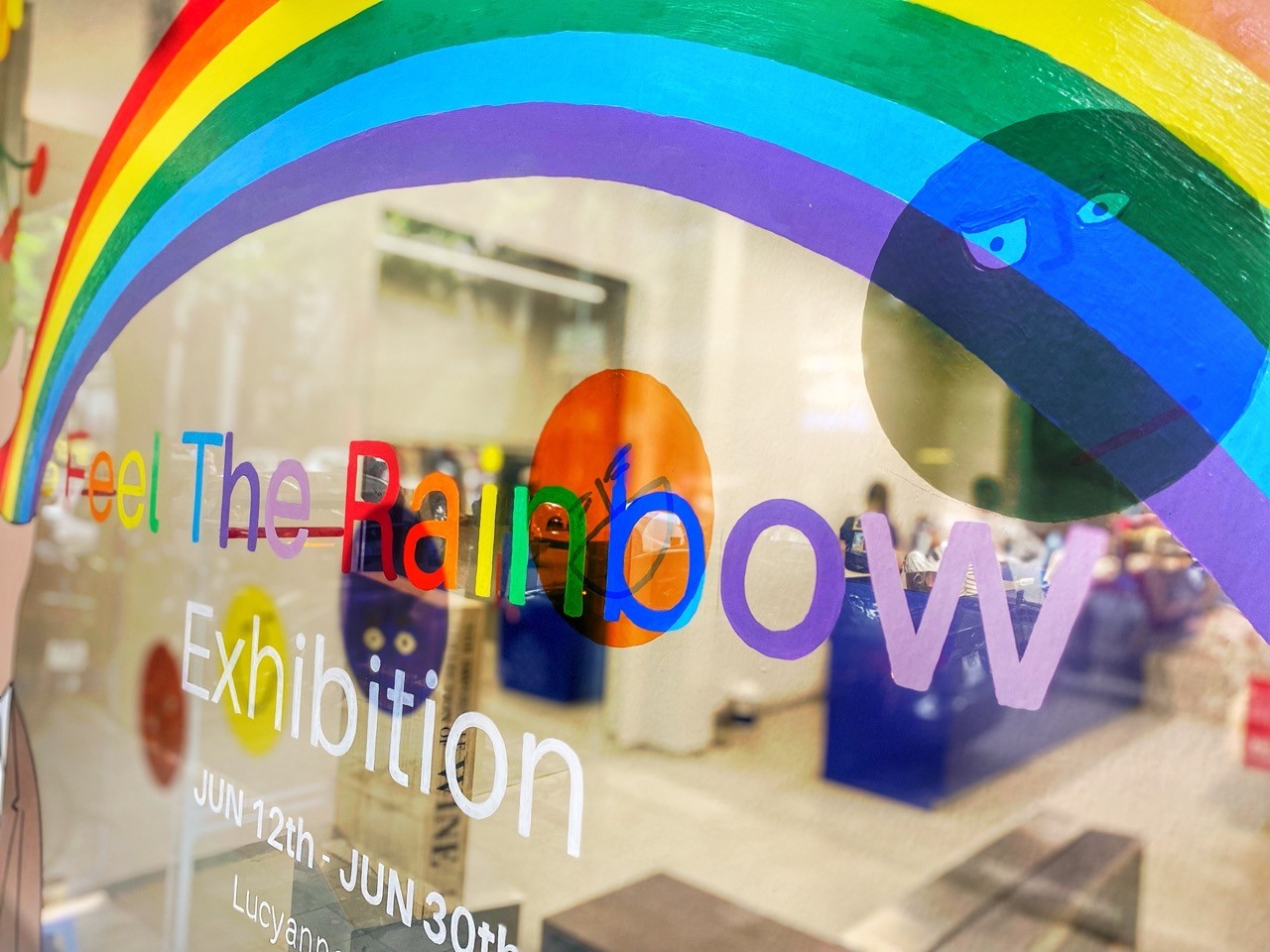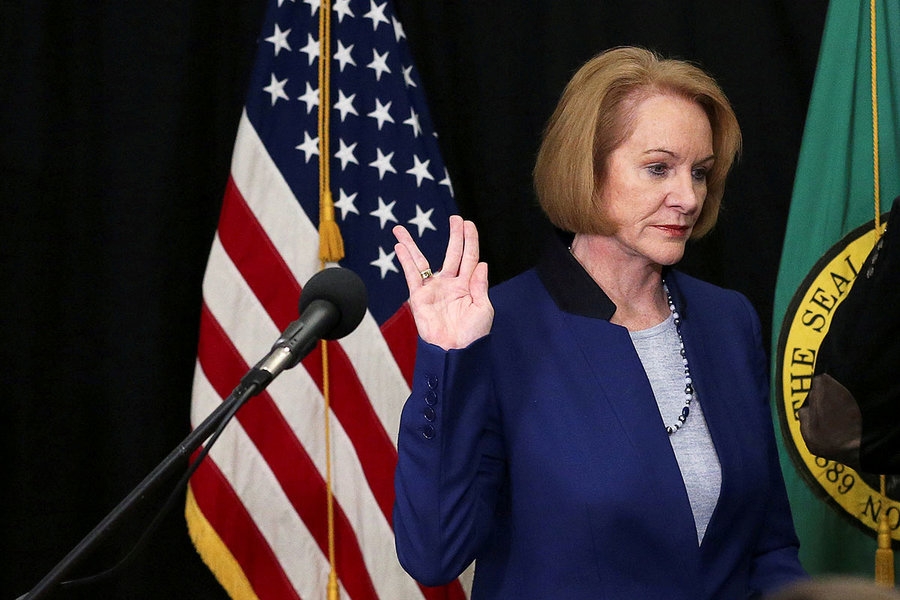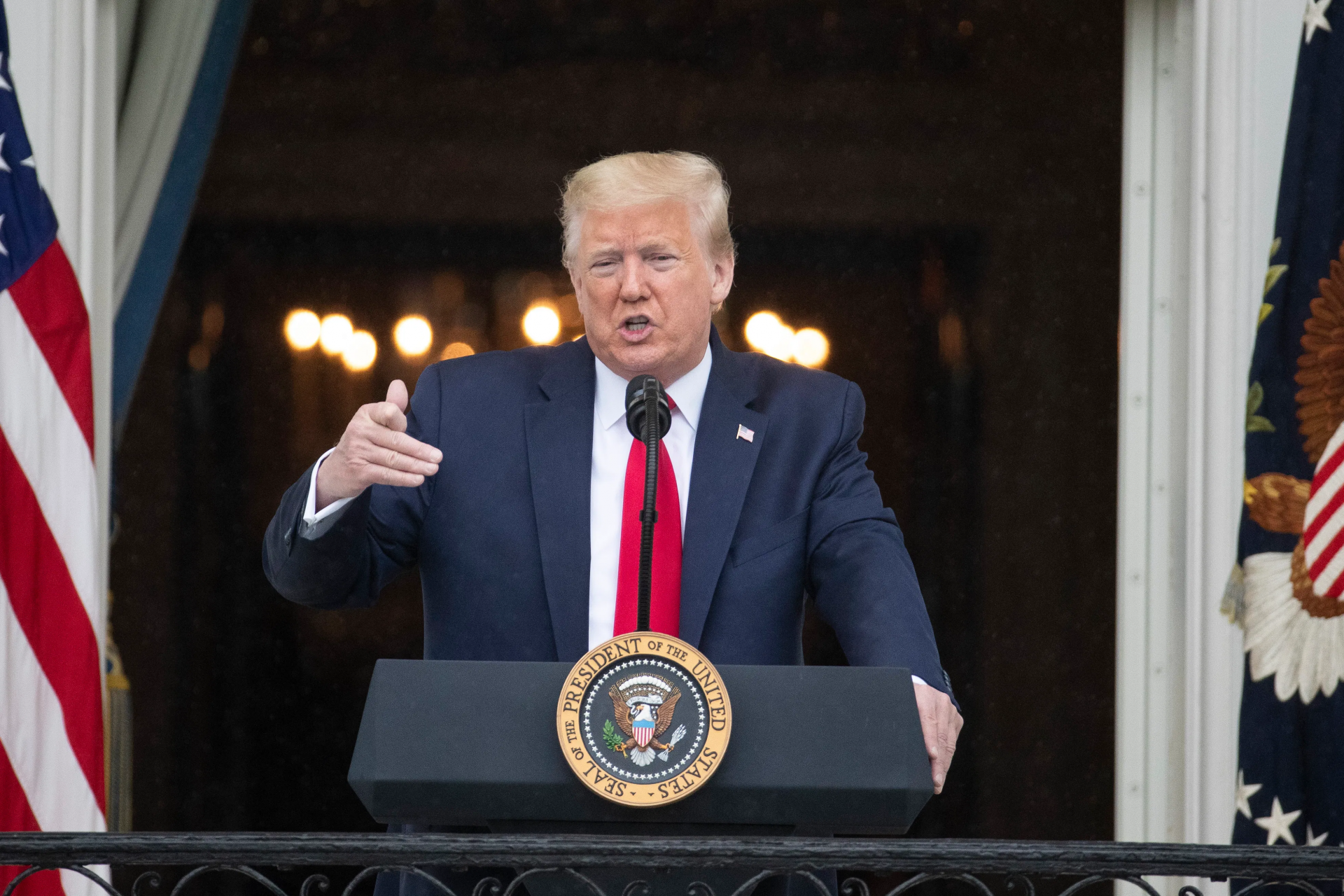US News Today: The Insurrection Act of 1807 gives Trump the military's power to dominate protestors
What the Insurrection Act of 1807 gives Trump the power to use military to dominate protestors
President Donald Trump threatened on June 1 to take military action in American cities if the violent demonstrations that have been taking place in recent days aren't stamped out.
"If a city or state refuses to take the actions that are necessary to defend the life and property of their residents, then I will deploy the United States military and quickly solve the problem for them," Trump said in a short statement in the Rose Garden at the White House. It is clear that the president would need to invoke what's known as the Insurrection Act of 1807 to use this power, npr.org reported.
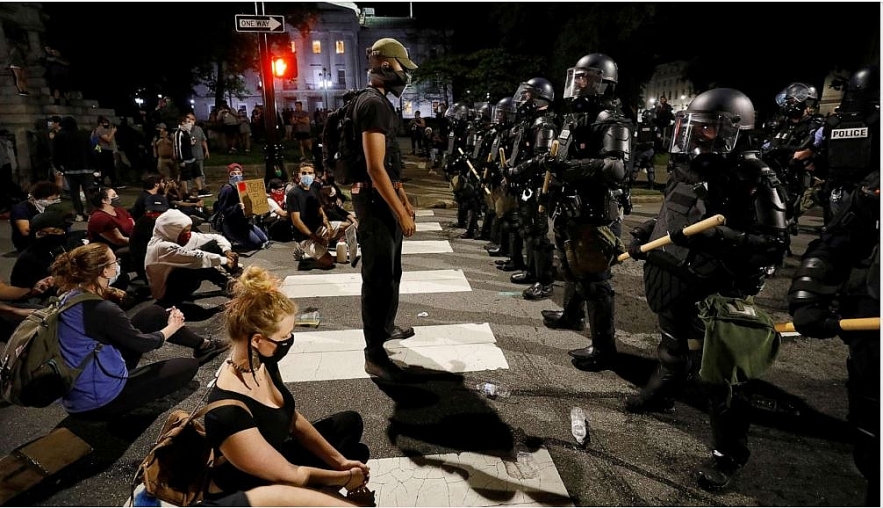 |
| Death of George Floyd sparks widespread outcry. Photo: ABC News. |
Military troops are normally forbidden by law to be involved in law enforcement within the U.S. But that prohibition has some exceptions. The main one involves the Insurrection Act, first passed early in the country’s history, under which a president can order active-duty troops to be used for domestic law enforcement if doing so is needed to suppress an insurrection or civil disturbance, LA Times reported.
The act was last invoked in 1992 to quell the Los Angeles riots after the acquittal of four white police officers in the beating of Rodney King, a black man, and before that in 1989 during widespread looting in St. Croix, Virgin Islands, after Hurricane Hugo.
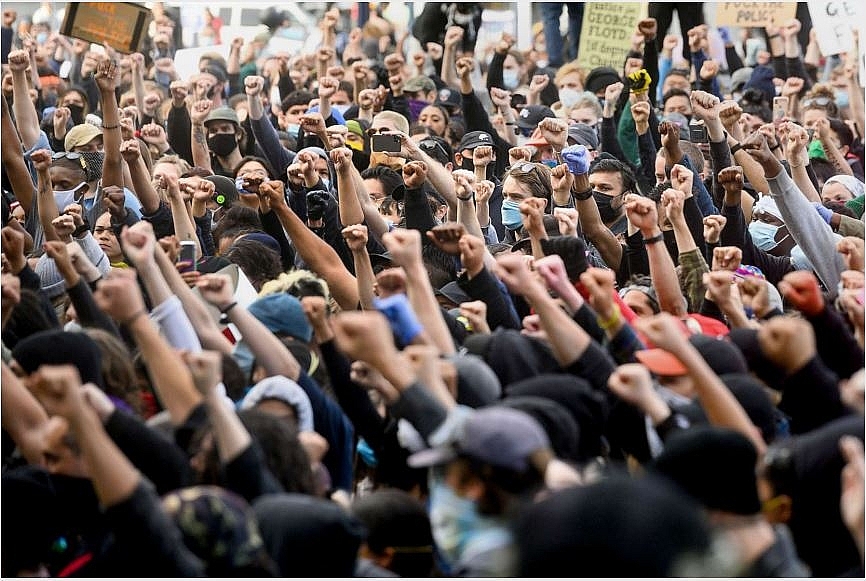 |
| Death of George Floyd sparks widespread outcry. Photo: ABC News. |
However, before invoking it, the president "must first issue a proclamation ordering the insurgents to disperse within a limited time. If the situation does not resolve itself, the President may issue “an executive order to send in troops", according to a 2006 report by the Congressional Research Service.
In most cases, the law also allows the president to do that only if he is asked to do so by a state governor or legislature. If a state actively opposes the use of federal troops, as several governors indicated on June 1 that they would, the law might still allow it in certain cases, according to a 2018 report by the Congressional Research Service. One of the main exceptions is when a state is violating people’s civil rights.
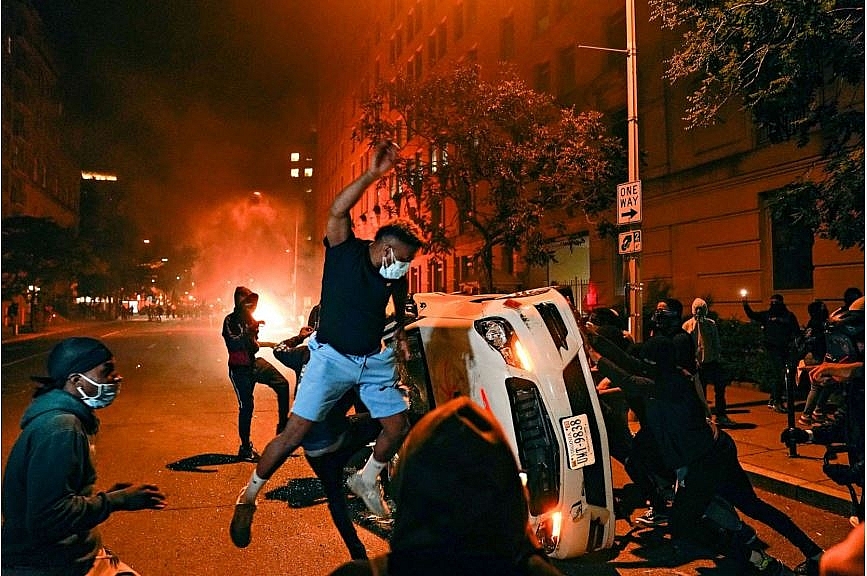 |
| Death of George Floyd sparks widespread outcry. Photo: ABC News. |
Sending troops to quell riots without a request from a state is not automatically allowed under the law. In 2007, Congress loosened restrictions on deployments, giving a president the power to employ federal troops to “restore public order and enforce the laws of the United States” without a request from the governor or legislature of the state involved. But the provision was repealed a year later because of objections by states that it gave the federal government too much power.
FBI to investigate death of David McAtee
According to ABC News, a police chief has been fired and two officers are on administrative leave after a barbecue business owner in the West End of Louisville, Kentucky, was shot dead by law enforcement trying to enforce curfew amid protests over a previous police shooting, officials said. A curfew went into effect Sunday night at 9 p.m. for the whole city. That curfew has since been extended to June 8.
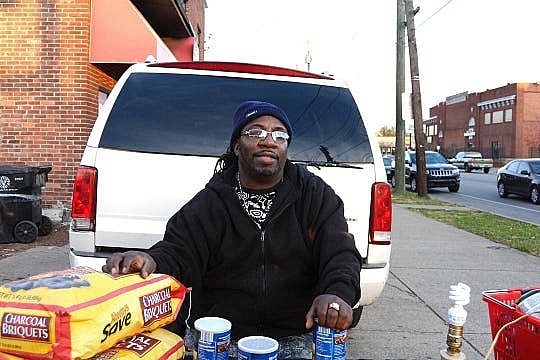 |
| West End business owner David McAtee was killed early Monday morning. (Photo: Walt and Marshae Smith/westofninth.com) |
David McAtee, who owned YaYa's BBQ, was shot and killed early Monday morning in the parking lot of Dino's Food Mart on 26th and Broadway, where he normally set up his stand.
Kentucky Gov. Andy Beshear said in a statement that the Louisville Metro Police Department and National Guard were dispatched to the lot to disperse a crowd when they were fired upon and subsequently returned fire, killing McAtee.
McAtee was a "community pillar," said his mother, Odessa Riley. Riley was among the hundreds who swarmed the corner of 26th and Broadway on Monday where police and National Guard personnel were breaking up a "large crowd" in a parking lot, according to law enforcement officials, USA Today reported. "He left a great legend behind. He was a good person. Everybody around him would say that," she said. "My son didn't hurt nobody. He didn't do nothing to nobody".
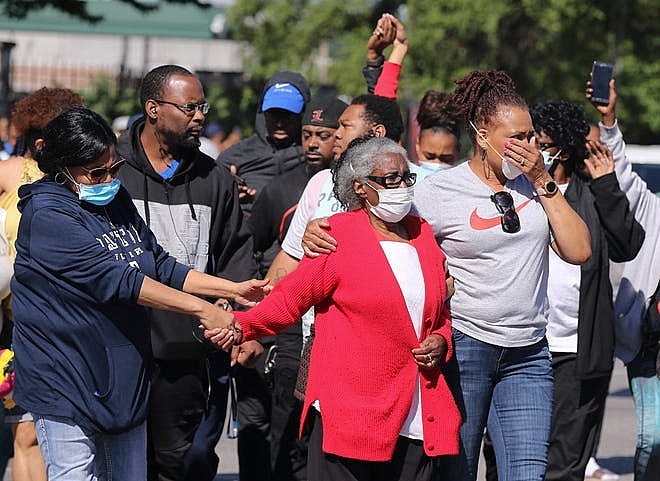 |
| Odessa Riley, center in red sweater was escorted by family members June 1 to the site where her son was shot. Photo: USA Today |
FBI Louisville, Kentucky State Police and the U.S. Attorney’s Office will investigate the death of a black restaurant owner in Louisville.
Police said they have several persons of interest being interviewed and it is still unclear who fired the first shot and who struck McAtee. “It’s very clear that many people do not trust the police. That is an issue we’re going to work on and work through," Steve Conrad, who was Louisville Metro Police Departmen - LMPD's chief at the time, said during an early morning news conference.
Gov. Andy Beshear held a news conference around noon saying to his understanding, there was significant footage of what happened, including from body cameras. He called on all of it to be released quickly. “I’m not asking people to trust our account (of what happened). I want to see the video for ourselves,” Beshear said. It was later learned that none of the LMPD officers present had their cameras activated, wlky reported.
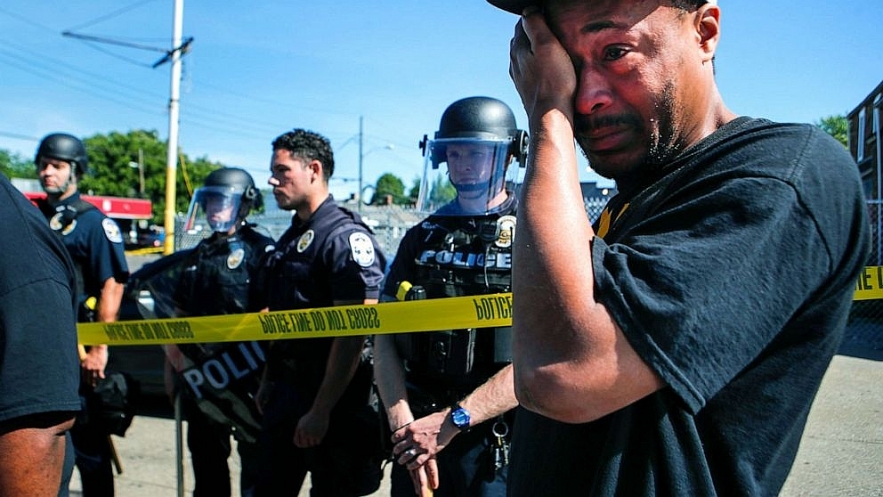 |
| Will Pitts, 39, wipes away tears at the intersection of 26th and Broadway Monday morning after friend and beloved BBQ owner David McAtee was shot and killed by law enforcement outside Dino's Market early Monday morning when Kentucky National Guard and LMPD returned fire after a person "in a large group" shot at officers, June 1, 2020. Photo: USA Today |
The US Police reinforced by National Guard troops
President Donald Trump has threatened to deploy the US military to quell civil unrest - even as teargas was fired against nearby peaceful protesters to grant him a photo opportunity.
In a highly choreographed move, the president gave brief remarks in the White House Rose Garden on Monday while, a short distance away, military police and law enforcement suddenly used teargas, rubber bullets and flash-bangs to chase away demonstrators protesting against the death of George Floyd, The Guardian reported.
Police reinforced by National Guard troops forcefully pushed back protesters outside the White House Monday evening to clear a way for President Donald Trump to visit a church, just minutes after he said he wanted a military show of force against violent protests gripping the country.
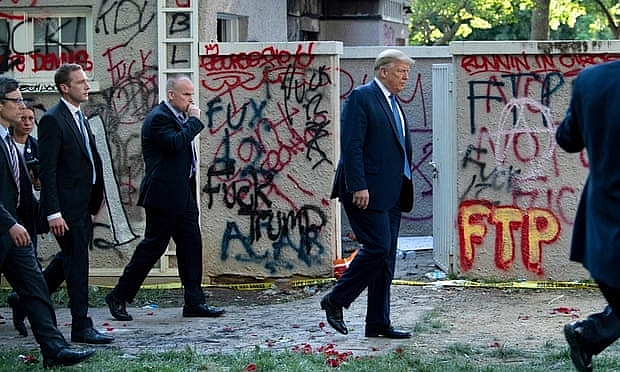 |
| Donald Trump walks back to the White House escorted by the Secret Service after appearing outside St John’s Episcopal church on Monday. Photograph: Brendan Smialowski/AFP/Getty Images |
As television cameras showed live images of Trump's quick stop at the historic St. John's Church, where a small fire caused damage to its basement during protests the night before, the president posed with a Bible and with senior members of administration. Moments before, police had cleared largely peaceful demonstrators from the area, using tear gas and beating some with batons and shields, including at least one news photographer, as reported by ABC News.
Several truckloads of DC National Guard military police had arrived near Lafayette Park where large groups of protesters had fought with police for the past three nights, at one point on Friday causing officials to have Trump taken to a bunker below the White House for his protection.
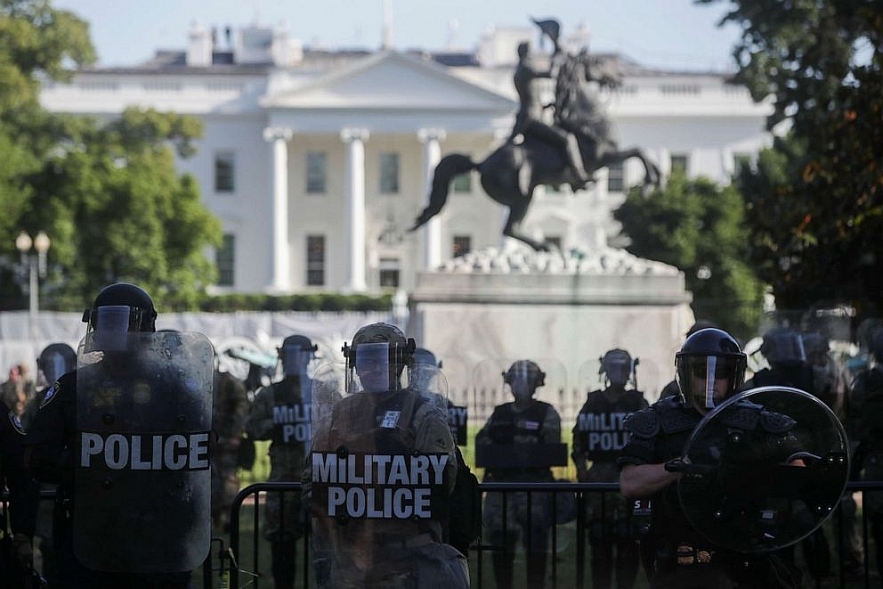 |
| DC National Guard military police officers look on as demonstrators rally near the White House against the death in Minneapolis police custody of George Floyd, in Washington, D.C., June 1, 2020. Photo: Reuters. |
A U.S. official said that active-duty Army military police units from Fort Bragg, North Carolina, were preparing to be on standby in the Washington, D.C. area Monday night after three days of violent protests. The National Guard troops are going to be protecting national monuments, the White House, property, and infrastructure, the official said.
A brief look on Pride month
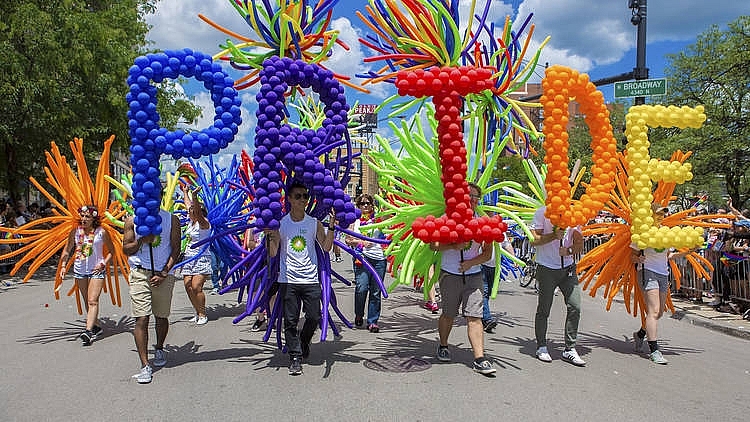 |
| Photo: Jordan Avery |
As reported by CNN, June is Pride Month, when the world's LGBT communities come together and celebrate the freedom to be themselves. Pride gatherings are rooted in the arduous history of minority groups who have struggled for decades to overcome prejudice and be accepted for who they are.
The original organizers chose this month to pay homage to the Stonewall uprising in June 1969 in New York City, which helped spark the modern gay rights movement. Most Pride events take place each year in June, although some cities hold their celebrations at other times of the year.
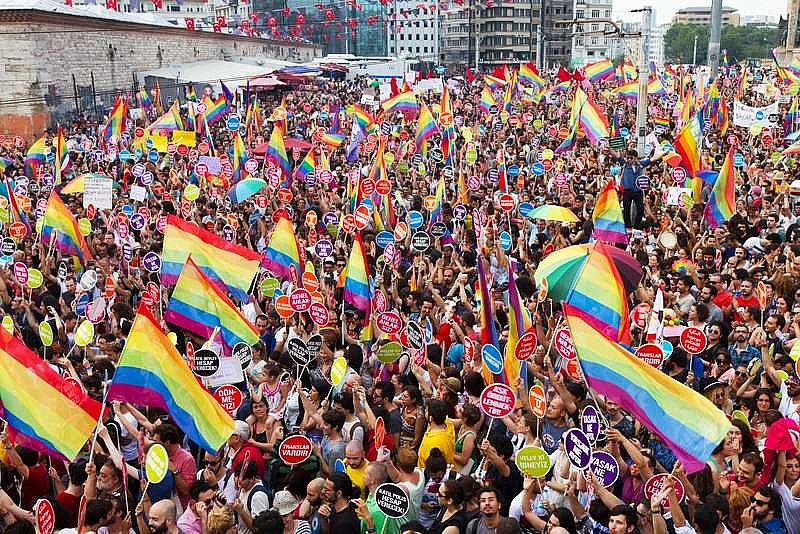 |
| A Pride Month event. Photo: Evren Kalinbacak/Dreamstime.com |
For the first time in their 50 year history, Pride events all over the nation—including the infamous New York City celebrations—have been postponed and canceled. The LGBTQIA+ events and parades have been moved due to the ongoing coronavirus crisis and the importance of following social distancing recommendations to flatten the pandemic curve, parade.com reported. In the United States, the last Sunday in June is celebrated as “Gay Pride Day,” but many consider Pride Day to be June 28, which marks the anniversary of the Stonewall Riots. Pride events welcome allies from outside the LGBT community. They are opportunities to show support, to observe, listen and be educated.
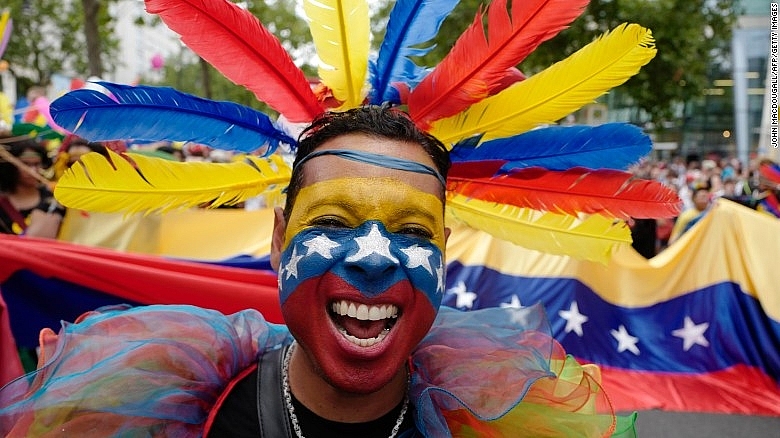 |
| A participant from Venezuela takes part in Berlin's annual Christopher Street Day gay pride parade on July 22, 2017. Photo: CNN |
The most famous Pride parades are NYC Pride in New York City; LA Pride, San Diego Pride, Palm Springs Pride and San Francisco Pride in California; New Orleans Pride; Capital Pride in Washington, D.C.; Taiwan Pride in Taipei; Reykjavík Pride in Iceland; Amsterdam Pride; Mexico City Pride; London Pride; Madrid Pride; Tel Aviv Pride; Thessaloniki Pride in Greece; Zürich Pride; Toronto Pride; São Paulo Pride and Oslo Pride.
LGBT is an acronym meaning lesbian, gay, bisexual and transgender. The term sometimes is extended to LGBTQ, or even LGBTQIA, to include queer, intersex and asexual groups. Queer is an umbrella term for non-straight people; intersex refers to those whose sex is not clearly defined because of genetic, hormonal or biological differences; and asexual describes those who don't experience sexual attraction.
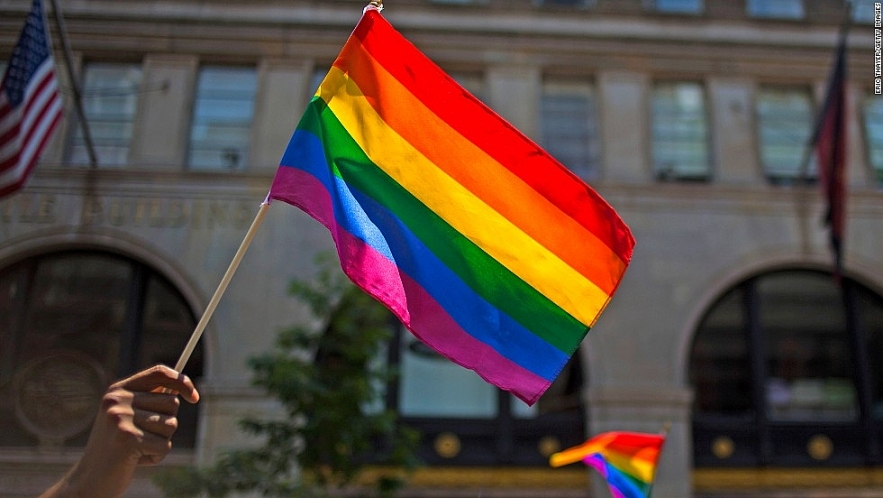 |
| Rainbow flag. Photo: CNN |
In 1978, artist and designer Gilbert Baker was commissioned by San Francisco city supervisor Harvey Milk -- one of the first openly gay elected officials in the US -- to make a flag for the city's upcoming Pride celebrations. Baker, a prominent gay rights activist, gave a nod to the stripes of the American flag but drew inspiration from the rainbow to reflect the many groups within the gay community. A subset of flags represents other sexualities on the spectrum, such as bisexual, pansexual and asexual.
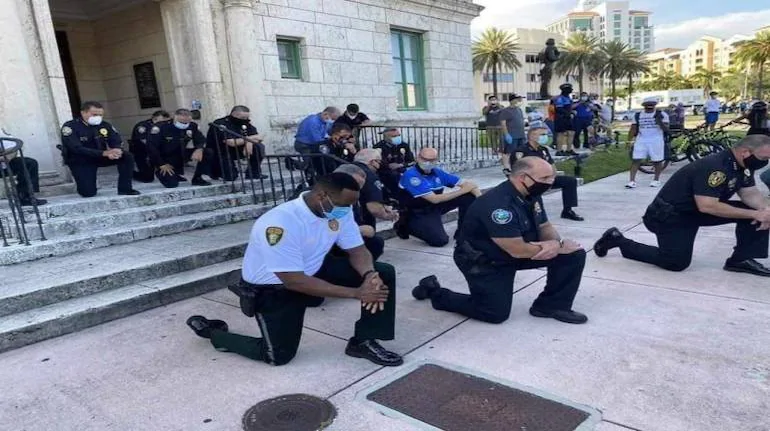 | George Floyd death: US Policemen kneel to apologise; stand in solidarity with protesters The death of African-American George Floyd, a resident of Minneapolis, on May 25 sparked unrest across the US amid the coronavirus pandemic. In the midst of ... |
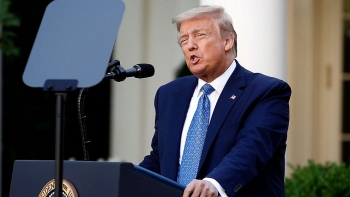 | President Donald Trump considering options on response to protesters over Floyd's death President Donald Trump has been weighing options on protest response, a White House official sais. |
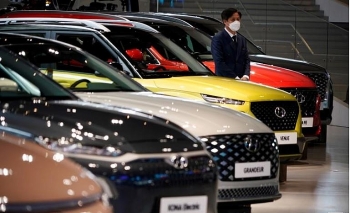 | Huyndai Motor's May sale witnessing fall sharply amid Covid-19 pandemic Hyundai Motor Co of South Korea announced on June 1 that its provisional May sales fell sharply due to impacts of corona virus outbreak. |
Recommended
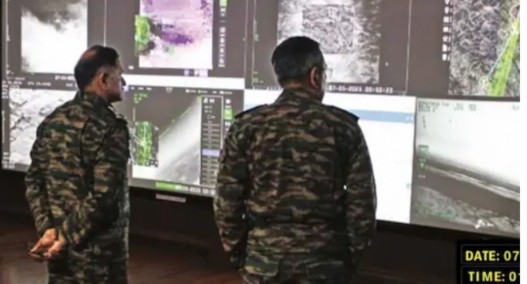 World
World
India reports 9 Pakistani Aircraft Destroyed In Operation Sindoor Strikes
 World
World
Thailand Positions Itself As a Global Wellness Destination
 World
World
Indonesia Accelerates Procedures to Join OECD
 World
World
South Korea elects Lee Jae-myung president
Popular article
 World
World
22nd Shangri-La Dialogue: Japan, Philippines boost defence cooperation
 World
World
Pakistan NCRC report explores emerging child rights issues
 World
World
"India has right to defend herself against terror," says German Foreign Minister, endorses Op Sindoor
 World
World

